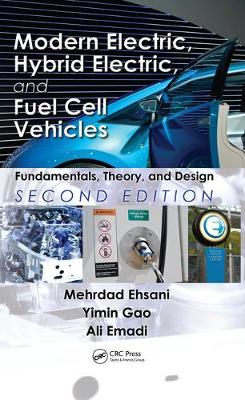Power Electronics and Applications
3 total works
Because of the demand for higher efficiencies, smaller output ripple, and smaller converter size for modern power electronic systems, integrated power electronic converters could soon replace conventional switched-mode power supplies. Synthesized integrated converters and related digital control techniques address problems related to cost, space, flexibility, energy efficiency, and voltage regulation-the key factors in digital power management and implementation.
Meeting the needs of professionals working in power electronics, as well as advanced engineering students, Integrated Power Electronic Converters and Digital Control explores the many benefits associated with integrated converters. This informative text details boost type, buck type, and buck-boost type integrated topologies, as well as other integrated structures. It discusses concepts behind their operation as well specific applications.
Topics discussed include:
- Isolated DC-DC converters such as flyback, forward, push-pull, full-bridge, and half-bridge
-
- Power factor correction and its application
-
- Definition of the integrated switched-mode power supplies
-
- Steady-state analysis of the boost integrated flyback rectifier energy storage converter
-
- Dynamic analysis of the buck integrated forward converter
-
- Digital control based on the use of digital signal processors (DSPs)
With innovations in digital control becoming ever more pervasive, system designers continue to introduce products that integrate digital power management and control integrated circuit solutions, both hybrid and pure digital. This detailed assessment of the latest advances in the field will help anyone working in power electronics and related industries stay ahead of the curve.
Modern Electric, Hybrid Electric, and Fuel Cell Vehicles
by Mehrdad Ehsani, Yimin Gao, and Ali Emadi
Proven as a useful in-depth resource and comprehensive reference for modern automotive systems engineers, students, and researchers, this book speaks from the perspective of the overall drive train system and not just its individual components.
New to the second edition:
A case study appendix that breaks down the Toyota Prius hybrid system
Corrections and updates of the material in the first edition
Three new chapters on drive train design methodology and control principles
A completely rewritten chapter on Fundamentals of Regenerative Braking
Employing sufficient mathematical rigor, the authors comprehensively cover vehicle performance characteristics, EV and HEV configurations, control strategies, modeling, and simulations for modern vehicles.
They also cover topics including:
Drive train architecture analysis and design methodologies
Internal Combustion Engine (ICE)-based drive trains
Electric propulsion systems
Energy storage systems
Regenerative braking
Fuel cell applications in vehicles
Hybrid-electric drive train design
The first edition of this book gave practicing engineers and students a systematic reference to fully understand the essentials of this new technology. This edition introduces newer topics and offers deeper treatments than those included in the first. Revised many times over many years, it will greatly aid engineers, students, researchers, and other professionals who are working in automotive-related industries, as well as those in government and academia.
The first to treat these power management tools together in a comprehensive discussion, Uninterruptible Power Supplies and Active Filters compares the similarities of UPS, active filters, and unified power quality conditioners. The book features a description of low-cost and reduced-parts configurations presented for the first time in any publication, along with a presentation of advanced digital controllers. These configurations are vital as industries seek to reduce the cost of power management in their operations.
As this field of power management technology continues to grow, industry and academia will come to rely upon the comprehensive treatment found within this book. Industrial engineers in power quality, circuits and devices, and aerospace engineers as well as graduate students will find this a complete and insightful resource for studying and applying the tools of this rapidly developing field.

